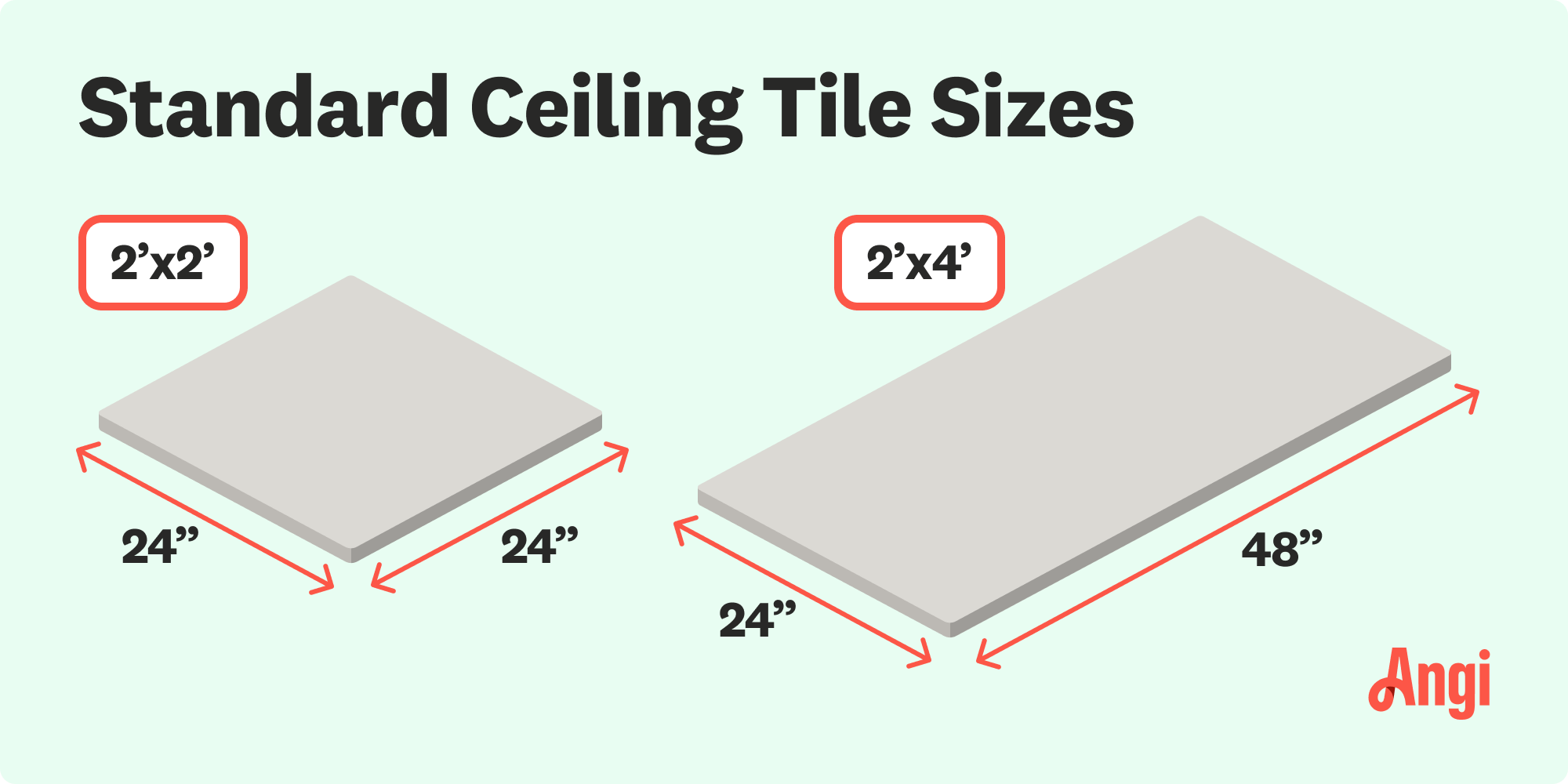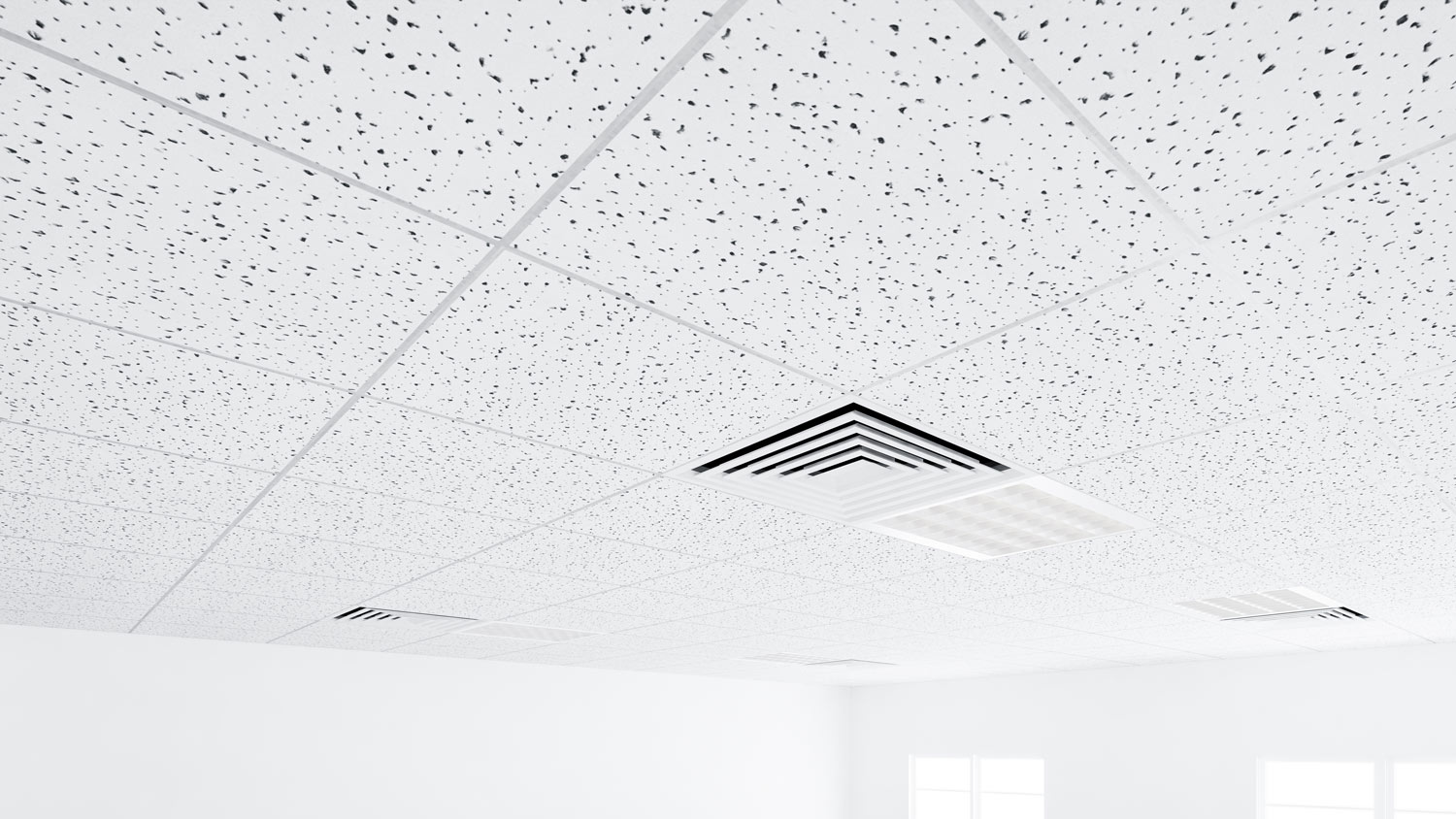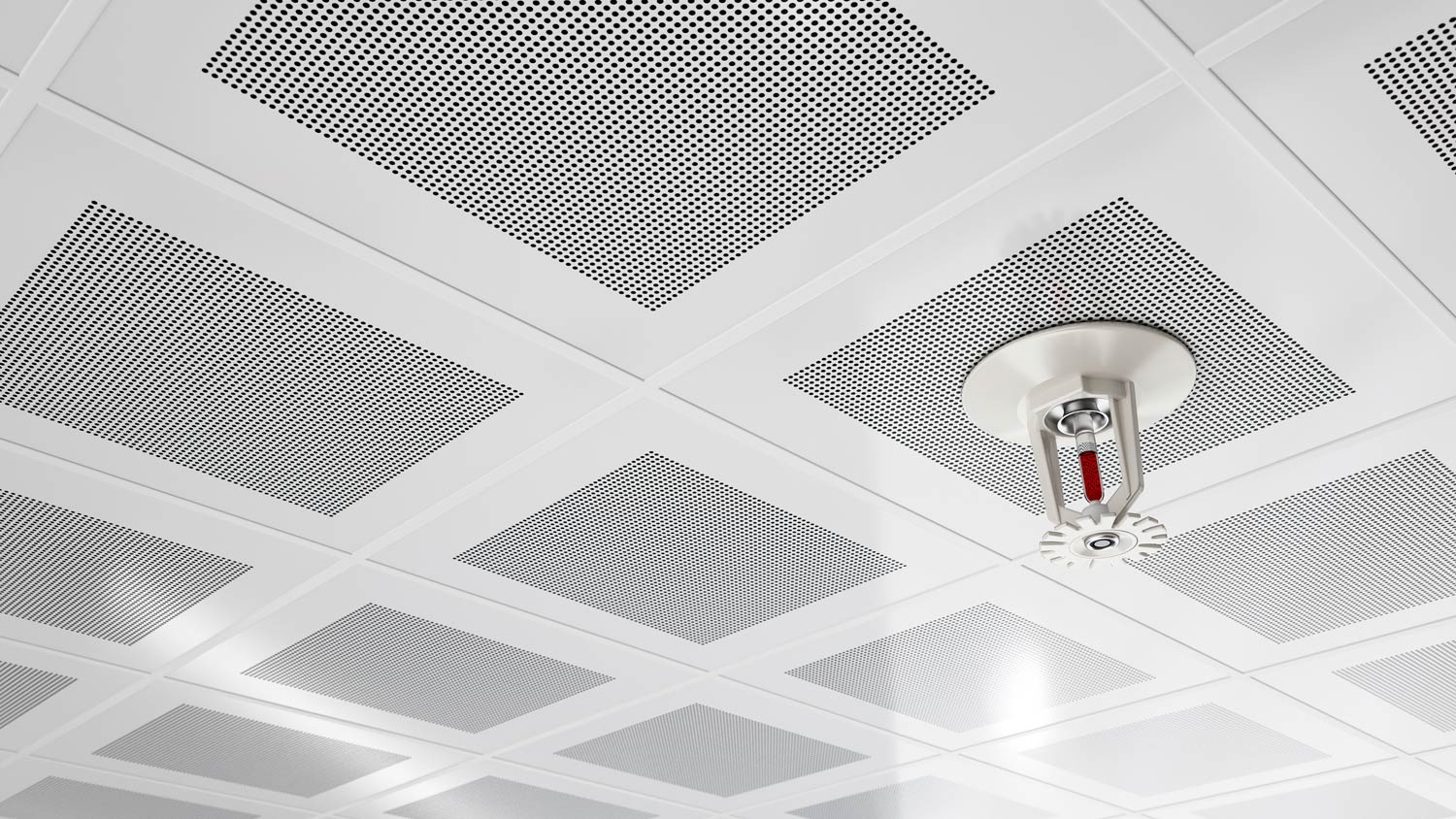
Discover storm damage repair costs, key price factors, and ways to save. Get transparent estimates to plan your home repairs with confidence.
The right ceiling tile size is anything but off the grid


Standard ceiling tiles are 2 by 2 or 2 by 4 feet.
Tile size depends on the grid, room size, budget, and preference.
The most popular drop ceiling grid system is 15/16 inches.
Some ceilings have 9/16-inch grids, which are less common.
The cost to install a drop ceiling is $1,100 to $3,300.
Drop ceilings are beloved for their accessibility, with more options than ever. Alongside the utilitarian fiberboard ceilings of yesteryear stand decorative tiles made from aluminum, PVC, and wood veneer. Some even mimic the ornate plaster found in Victorian homes. Regardless of the type, your ceiling tile won’t fit in the grid if you don't buy the right size. This guide goes over ceiling tile sizes so you can find your perfect fit.

Unlike the tiles in your shower or kitchen, ceiling tile sizes are standardized because they need to fit within a grid system. Though custom tiles or specialty options offer a wider variety, the two standard ceiling tile sizes are:
24-by-24-inch tiles (2-by-2-foot tiles)
24-by-48-inch tiles (2-by-4-foot tiles)
Depending on the manufacturer, the listed sizes may measure a fraction of an inch smaller or larger when you take out your ruler. Either way, they should fit within a standard grid system. Double-check the manufacturer’s instructions before installing your ceiling tiles. If you’re finding it challenging to choose a ceiling tile size, a professional ceiling installer can help you pick out the best option for your home.

When you think of a drop ceiling or suspended ceiling, you probably think of your elementary school or local DMV. This type of ceiling is exceedingly common in offices and government buildings, where you’ll find the standard size. Traditional ceiling tiles are made from fiberboard, but modern decorative options don’t have the same limitations, so it’s not unusual for the occasional odd size to end up in a home.
| Type of Ceiling Tile | Size (Inches) |
|---|---|
| Standard square | 24x24 |
| Standard rectangle | 24x48 |
| Small square | 12x12 |
| Small rectangle | 12x24 |
| Grid covers | 24x1 |
| Ceiling planks | Varies |
| Custom tile | Varies |
The standard ceiling tile is square and measures 24-by-24 inches. It covers an area of 4 square feet and comes in various materials, from standard fiberboard to metals like tin and aluminum. Wood veneer or PVC textured to look like faux wood are popular alternatives to tongue-and-groove ceiling planks.
In addition to the square, standard ceiling tiles come in a slightly larger rectangular size. This size measures 24-by-48 inches and covers an area of 8 square feet. This option is available from almost any manufacturer in any type of commonly available material.
Some manufacturers offer smaller square tiles that measure 12-by-12 inches. This type of tile doesn’t always require a grid system. You can install it directly onto your ceiling joists or over an existing ceiling using an adhesive. This option isn’t common but can help hide imperfections over an existing ceiling.
Some manufacturers offer smaller rectangular tiles that measure 12-by-24 inches. Like the smaller square tiles, you can install this type directly onto your ceiling joists or over an existing ceiling. You don’t necessarily need a grid.
You can purchase grid covers along with your ceiling tile. These pop over the grids for a cleaner or more decorative look. They’re a great addition when using a material like metal and want your grid to blend in with your tile. Grid covers measure 24-by-1 inches and are compatible with a standard-size grid.
Ceiling planks aren’t exactly a tile, but they can function like the tiles you use in a drop ceiling. They resemble wood paneling, mimicking shiplap, beadboard, or tongue-and-groove planks. Depending on the manufacturer, these planks come in a range of sizes that fit into standard grids using a clip.
If you have a non-standard grid, some manufacturers will make custom tiles. This option is more expensive than purchasing tiles in a standard size, and it’s not common, considering most grids suit standard-sized tiles.
If you’re installing a drop ceiling, the tiles fit inside a metal grid—though in rarer instances, you might be able to install them over an existing ceiling. Your tiles must be compatible with your grid, which you can find in the product description or manufacturer’s instructions. There are two standardized ceiling tile grids.
The most popular type of grid is a 15/16-inch grid system. Manufacturers may refer to it as a 1-inch face T-bar grid or a 1-inch wide grid. The grid itself features 1-inch wide metal bars. It works with 12-by-12-inch or 12-by-24-inch tiles. Even specialty tiles in different sizes are made to fit this size grid.
The 9/16-inch grid, also known as fine line or narrow suspended ceiling tile system, is considered more modern than the standard 15/16-inch grid because it has a thinner profile. This gives it a more streamlined look while supporting heavy-duty ceilings. Since it’s not as common, you may find fewer compatible tiles for this grid.

If you already have a drop ceiling and want to replace your tiles, measuring your existing tiles is simple. You can use a normal tape measure and follow these steps:
Remove the tile: Pop the ceiling tile out of the ceiling. Wear gloves and protective clothing if your ceiling has fiberglass insulation.
Measure the width of the tile: Run your tape measure along the width of the tile and record the end-to-end measurement.
Measure the length of the tile: Run your ruler along the length of the tile and record the end-to-end measurement.
Your measurements will likely be a fraction of an inch off from the nominal size (or the size in the tile’s name). For example, a 24-by-24-inch tile may actually measure 23 3/4-by-23 3/4 inches. Take your measurements to the hardware store and buy the closest size. You can read the manufacturer’s instructions to double-check if the tile is compatible with your existing grid.
A local ceiling installer can help you find the perfect tiles for your specific ceiling. If you plan to install your ceiling DIY, you’ll need to consider a few factors. Remember, this can be complicated if you don’t already have a grid installed and don’t have experience. Consider the following when choosing a tile size.
If you already have a ceiling tile grid system and are simply replacing your ceiling tiles, the grid is the most important factor when choosing a tile size. Specific grids are compatible with certain tile sizes. Look at the tile’s product description to ensure it's compatible with your grid. Most tiles work with a 15/16-inch grid, but not all of them do.
Larger tiles work better on larger ceilings, so 12-by-24-inch tiles are used in open-plan offices and school corridors. You’ll need to use fewer tiles, which makes installation quicker and more affordable.
If you like a specific ceiling tile material or design that complements the room, install it. Smaller, more ornate tiles in retro materials like tin or aluminum can add character to a space. At the same time, you may want something more standard for a finished basement or workshop. In that case, a larger tile can visually open up the room.
The cost to install a drop ceiling is $1,100 to $3,300. The tiles can vary dramatically in price, ranging from $1 to $70 per square foot, depending on the material. Wood and metal cost significantly more than fiberboard tiles. You can save money by choosing a large, basic tile instead of a small, high-end option.
From average costs to expert advice, get all the answers you need to get your job done.

Discover storm damage repair costs, key price factors, and ways to save. Get transparent estimates to plan your home repairs with confidence.

Looking to turn your yard into a hockey or ice skating paradise this winter? Use this backyard ice rink cost guide to see what the installation will total.

Brick walls can add character and elegance to interior and exterior spaces. Use this brick wall cost guide to see the price range for adding one to your home.

How much do you pay a contractor up front? Many states cap how much a contractor can ask for before work begins. Here’s what you need to know.

House construction is a lengthy and expensive project. Learn how to hire a contractor to build a house so they can take on the physical and mental load for you.

If you’re replacing your roof or flooring, you might be wondering, “How much plywood do I need?” The answer comes through a simple calculation.